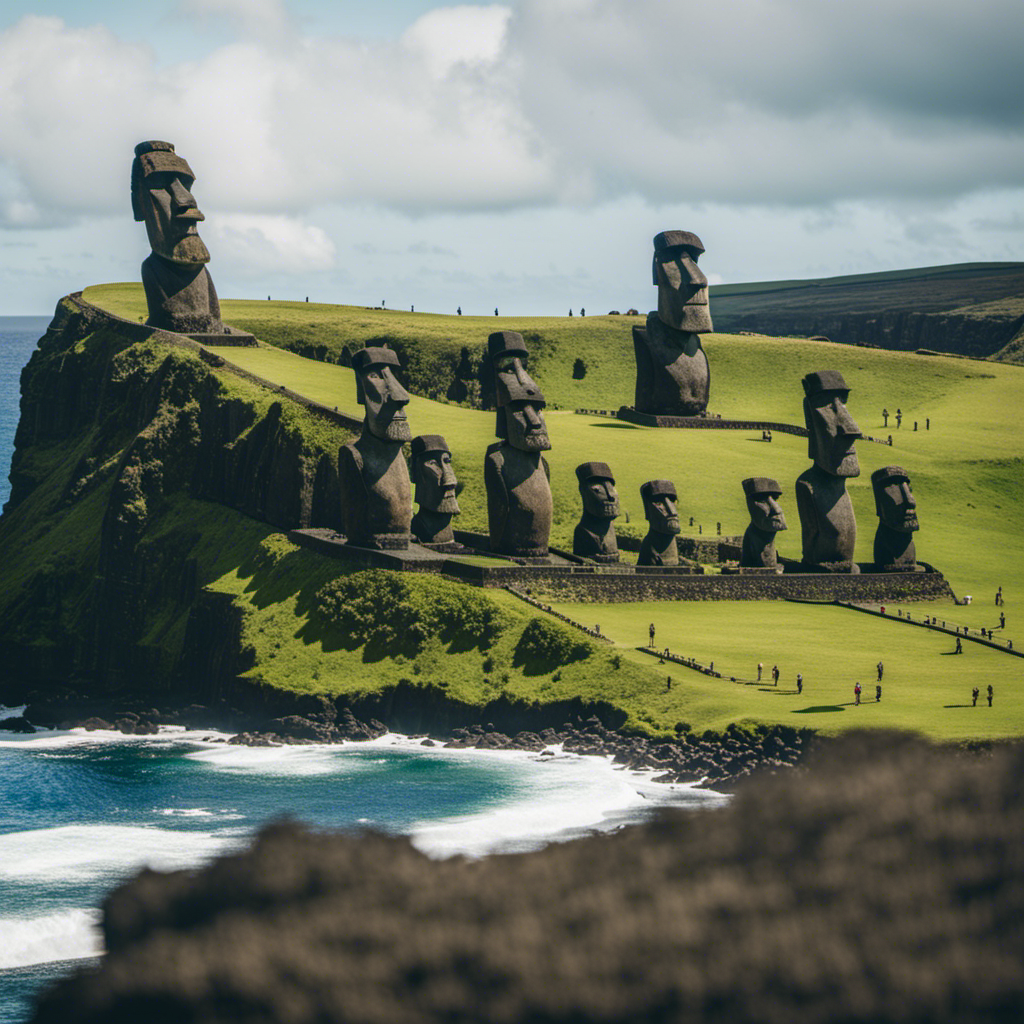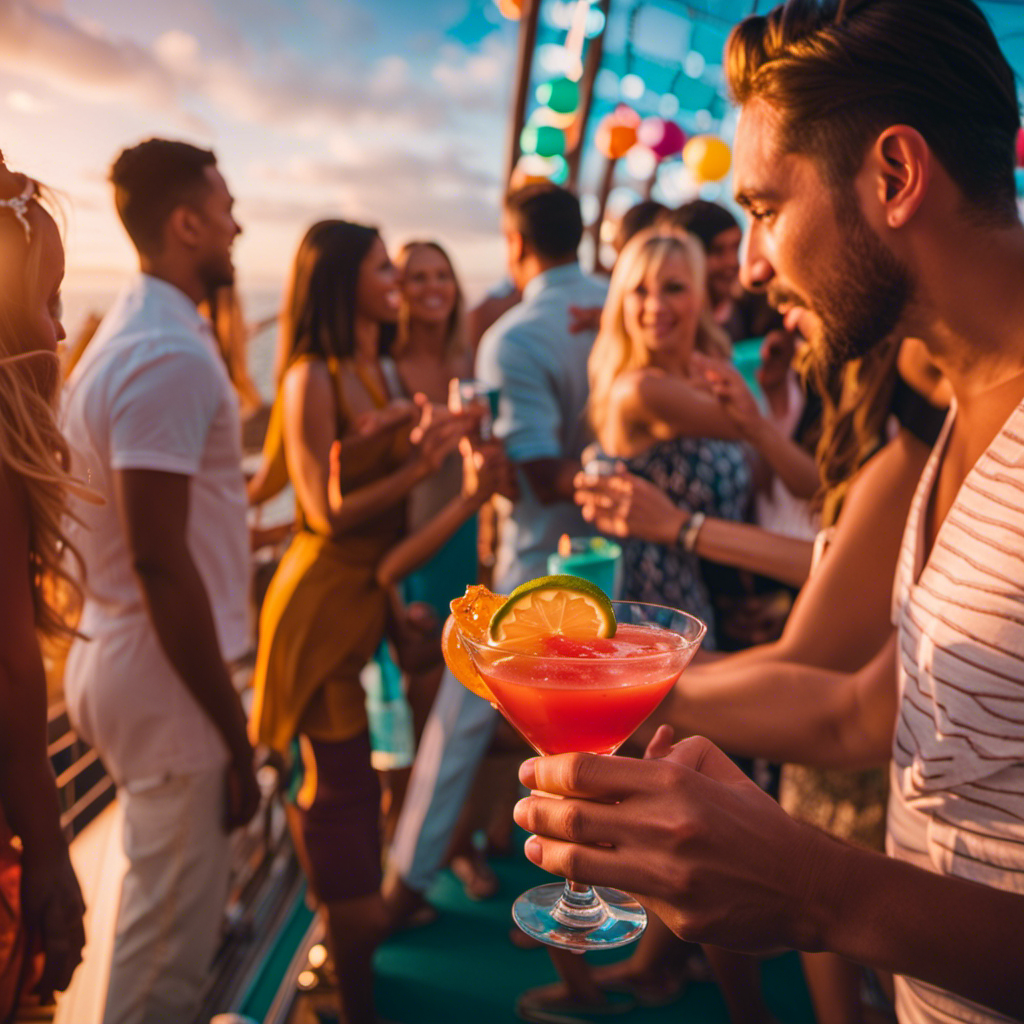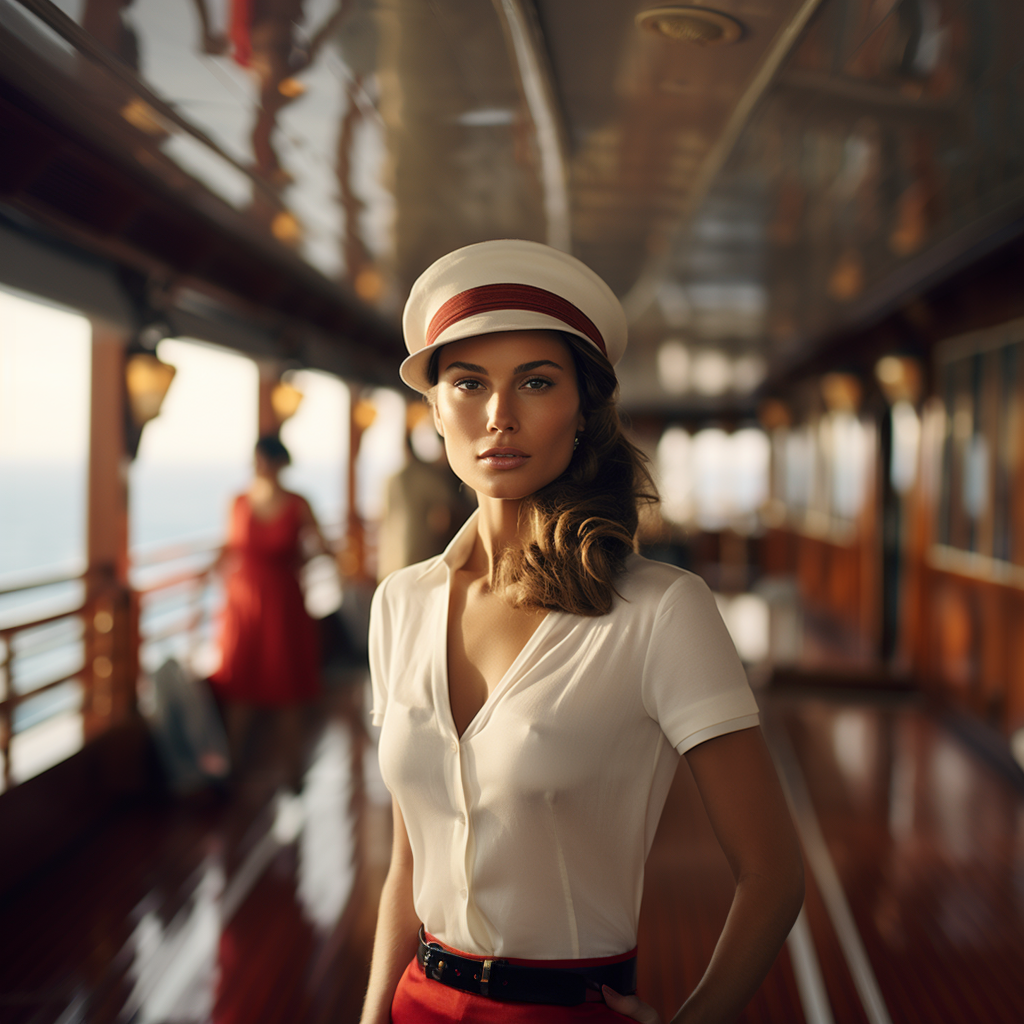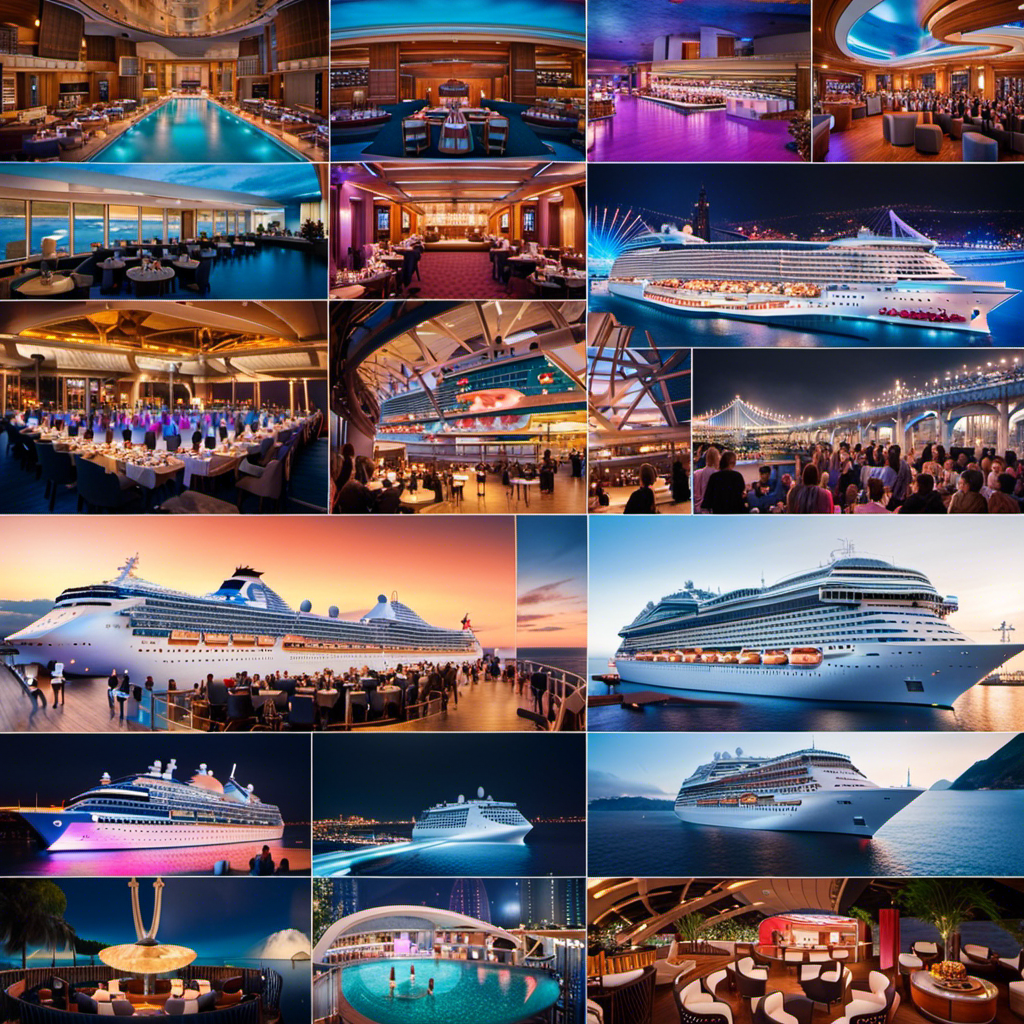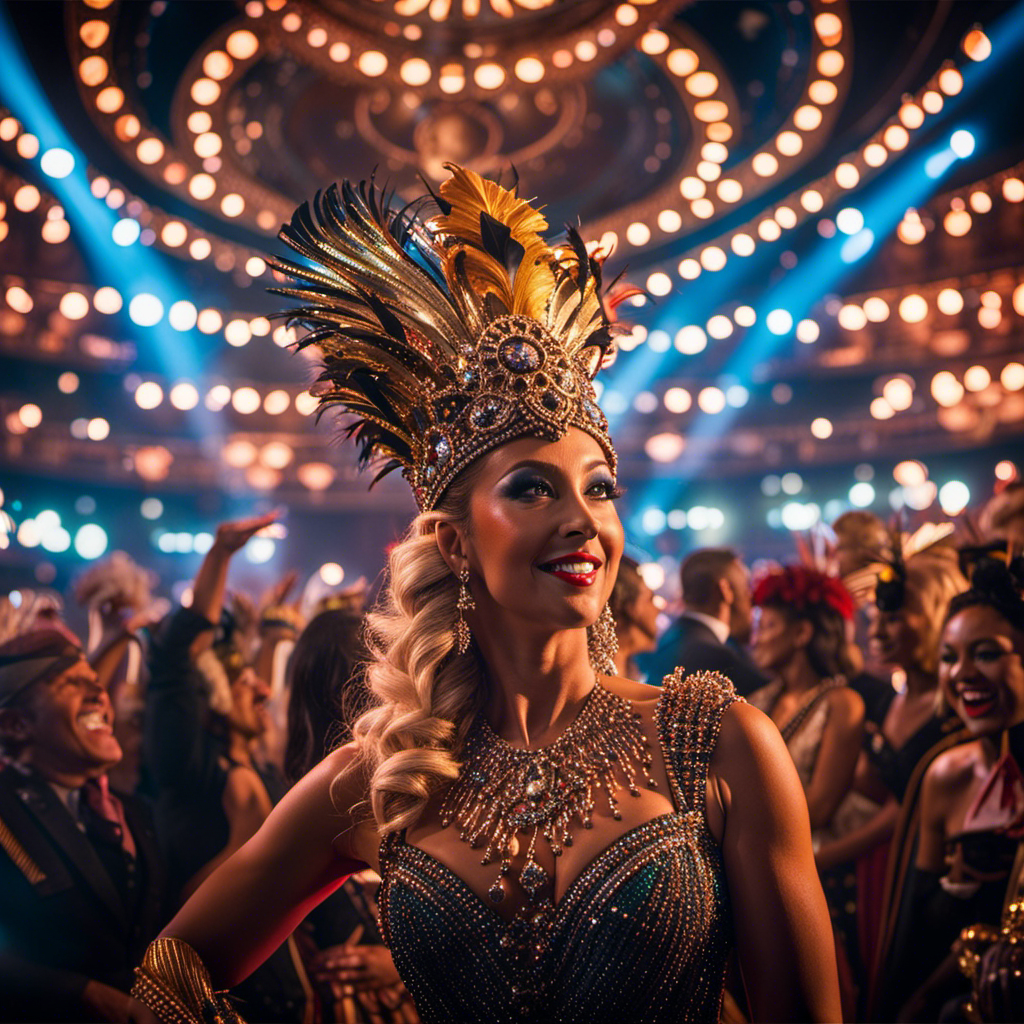As soon as I step onto the intriguing Easter Island, I am instantly captivated by the enigmatic moai statues and the breathtaking natural scenery of the island.
The towering figures, carved from volcanic rock by a Stone Age culture, hold secrets that continue to baffle researchers. With their supernatural energy and ancient beliefs, the moai act as a window into the past, offering a glimpse into the Polynesian culture and ancestral worship.
Join me on this scientific journey as we unravel the mysteries of Easter Island’s enigmatic moai and explore its stunning natural wonders.
Key Takeaways
- Easter Island is home to nearly 1,000 enigmatic moai statues, carved from volcanic rock.
- Local guides believe that the moai statues acted as antennas, transmitting supernatural energy.
- Scientists have yet to determine how the heavy moai statues were moved by a Stone Age culture.
- Ranu Kau, a volcanic crater with a picturesque lake, offers breathtaking views and is a must-see destination on Easter Island.
The Mysterious Moai Statues
I find it fascinating that scientists have yet to determine how the heavy moai statues were moved by a Stone Age culture. These statues, with their cultural significance and artistic craftsmanship, continue to baffle researchers.
The moai are carved from volcanic rock and depict human-like figures with distinct features such as heavy brows, elongated noses, and protruding lips. Some of the statues are even half-buried, giving them the appearance of ‘Big Heads.’
Theories about how they were transported range from rolling them on tree trunks to even extraterrestrial involvement. Additionally, the moai face inland, possibly serving as protectors of the island’s inhabitants.
The enigmatic nature of these statues adds to their allure, and their significance and purpose remain subjects of debate and exploration.
Supernatural Beliefs and Mysticism
Visitors have reported a mysterious presence when staring into the eyes of the statues on Easter Island. This phenomenon has sparked supernatural beliefs and theories surrounding the moai statues.
Local guides believe that the statues acted as antennas, transmitting supernatural energy. They were placed over graves of distinguished ancestors believed to possess manna. The eyes of some statues were made of shell and stone, inserted for special occasions.
When gazing into these eyes, visitors have described feeling an indescribable presence, a connection to something beyond the physical realm. This mystical experience adds to the allure of Easter Island and the enigmatic nature of the moai.
Scientists have yet to fully understand the mechanisms behind this mysterious presence, leaving room for speculation and exploration. The supernatural energy associated with the moai continues to fascinate researchers and visitors alike, fueling the intrigue surrounding these ancient statues.
The Enigma of Moving the Moai
Scientists have been unable to determine the methods used by the Stone Age culture to move the heavy statues on Easter Island. The techniques and tools used for carving the moai are also a subject of speculation and debate.
The cultural significance of the moai statues is undeniable, as they are often associated with Polynesian culture and ancestral worship. These statues, carved from volcanic rock, depict humans with distinct features such as heavy brows, elongated noses, and protruding lips.
The enigmatic nature of the moai continues to fascinate researchers and visitors alike. The statues’ purpose, whether as protectors or antennas transmitting supernatural energy, remains a subject of exploration.
The mystery surrounding the movement and creation of the moai adds to their allure, making Easter Island a captivating destination for those seeking to unravel its secrets.
Exploring Rano Raraku Quarry
Upon arriving at the Rano Raraku Quarry, I was amazed by the scattered moai statues and their impressive size. The quarry contains approximately 400 moai statues, including the largest on the island.
Here are three fascinating aspects of the unfinished statues and their creation process:
-
Unfinished statues: About half of the statues in the quarry remain unfinished, providing a unique glimpse into the artistic process and techniques used by the ancient Rapa Nui people.
-
Creation process: The moai statues were carved from volcanic rock found in the quarry. The process involved meticulous craftsmanship, with the statues being chiseled and shaped using stone tools. The level of detail and precision in the carving is truly remarkable.
-
Centuries of exposure: Over time, the unfinished statues have been exposed to the elements, resulting in some being buried up to their heads. This natural burial offers insight into the passage of time and the island’s geological history.
The Rano Raraku Quarry is a remarkable site that sheds light on the creation and production of the enigmatic moai statues. It is a testament to the skill and ingenuity of the ancient Rapa Nui people.
Natural Wonders: Ranu Kau and Ahu Tongariki
Arriving at Ranu Kau, I was captivated by the breathtaking view of the volcanic crater and its picturesque lake. This natural wonder on Easter Island is not only visually stunning but also holds immense geological significance. Ranu Kau is a result of the island’s volcanic history, with its formation dating back to ancient eruptions. The crater, with its steep walls and vibrant blue lake, provides a glimpse into the island’s tumultuous past. On the other hand, Ahu Tongariki showcases the rich cultural heritage of Easter Island. As the largest ceremonial center on the island, it is home to 15 magnificent moai statues, including one towering at 30 feet tall. Ahu Tongariki’s cultural significance cannot be understated, as it represents the ancestral worship and Polynesian traditions that are deeply rooted in the island’s history. Together, Ranu Kau and Ahu Tongariki offer visitors a unique and awe-inspiring experience, blending the natural wonders of the volcanic landscape with the island’s rich cultural heritage.
| Ranu Kau’s Volcanic History | Ahu Tongariki’s Cultural Significance |
|---|---|
| – Result of ancient eruptions | – Largest ceremonial center on the island |
| – Steep walls and vibrant blue lake | – Home to 15 magnificent moai statues |
| – Offers insight into the island’s tumultuous past | – Represents ancestral worship and Polynesian traditions |
Frequently Asked Questions
How Were the Moai Statues Carved and What Tools Were Used?
The moai statues were carved using stone tools and a technique called stone sculpting. The Rapa Nui people used a combination of hammerstones, chisels, and abrasives to shape the volcanic rock into the iconic figures we see today.
What Is the Significance of the Moai Statues Facing Inland?
The moai statues facing inland on Easter Island hold significant cultural importance. They may have served as protectors of the island’s inhabitants, symbolizing ancestral worship and connecting the living with the spiritual realm.
How Were the Moai Statues Transported From the Quarry to Their Final Locations?
The transportation methods used to move the moai statues from the quarry to their final locations on Easter Island remain a mystery. Scientists are fascinated by the engineering marvels achieved by the Stone Age culture.
What Is the Purpose of the Bird Man Competition Held at Orongo?
The purpose of the bird man competition at Orongo was to select the ruler of Easter Island for one year. This ancient tradition symbolized the islanders’ belief in the connection between humans, birds, and the spiritual realm.
How Did the Pink Sand at Anakena Beach Form?
The pink sand at Anakena Beach is formed by the erosion of red volcanic rocks, which contain iron-rich minerals. Over time, the waves and weathering break down these rocks, resulting in the unique pink hue of the sand.
Meet Asra, a talented and adventurous writer who infuses her passion for exploration into every word she writes. Asra’s love for storytelling and her insatiable curiosity about the world make her an invaluable asset to the Voyager Info team.
From a young age, Asra was drawn to the power of words and their ability to transport readers to far-off lands and magical realms. Her fascination with travel and cultures from around the globe fueled her desire to become a travel writer, and she set out on a journey to turn her dreams into reality.

